|
|
|
Rapid Prototyping
I need to generate my architectures in an actual material for two reasons 1) check my FEA with actual mechanical compression data and 2) In the third part I will eventually need to make my architectures with polymers that can sustain cell growth to test for bone regeneration purposes.
|
|
|
|
I make most of my shapes with lovely, lovely Rhino. The pictures here correspond to a series of cutplane, mirror, array, and patch functions that I use to generate the complete scaffold, shown in 11. To make a mold of this, I cutplane the top part of one architecture, surround the entire thing with a cylinder, invert the normals and join. |
|
|
|
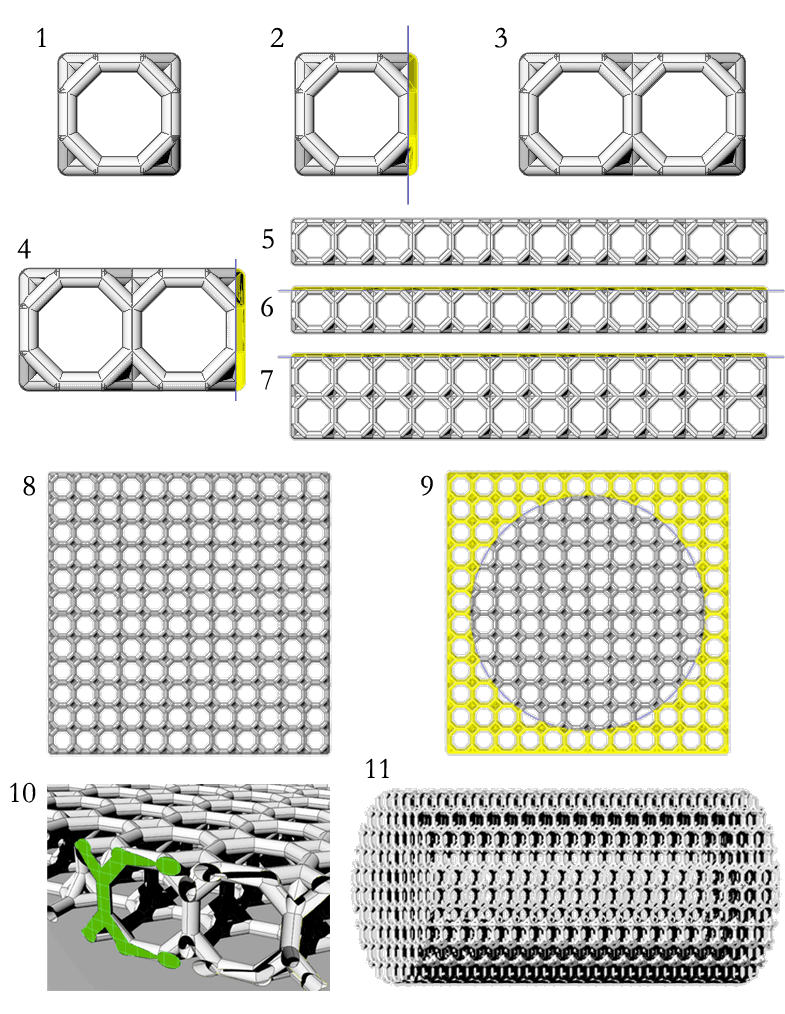 |
|
|
|
I have designed the mold in two ways in the past which has worked. The first is a simple cup mold that can hold a volume of material above the void space. Then I centrifuge the material in or pull a vacuum. The second type of mold is and injection mold, shown here for a novel bone anchor that I designed and built. On the right, the bone anchor in ProtoBuild, middle is injection mold, left is finished bone anchor cast in poly(propylene fumarate) a biomaterial we use. Closeups of the mold and the cast part are below. |
|
|
|
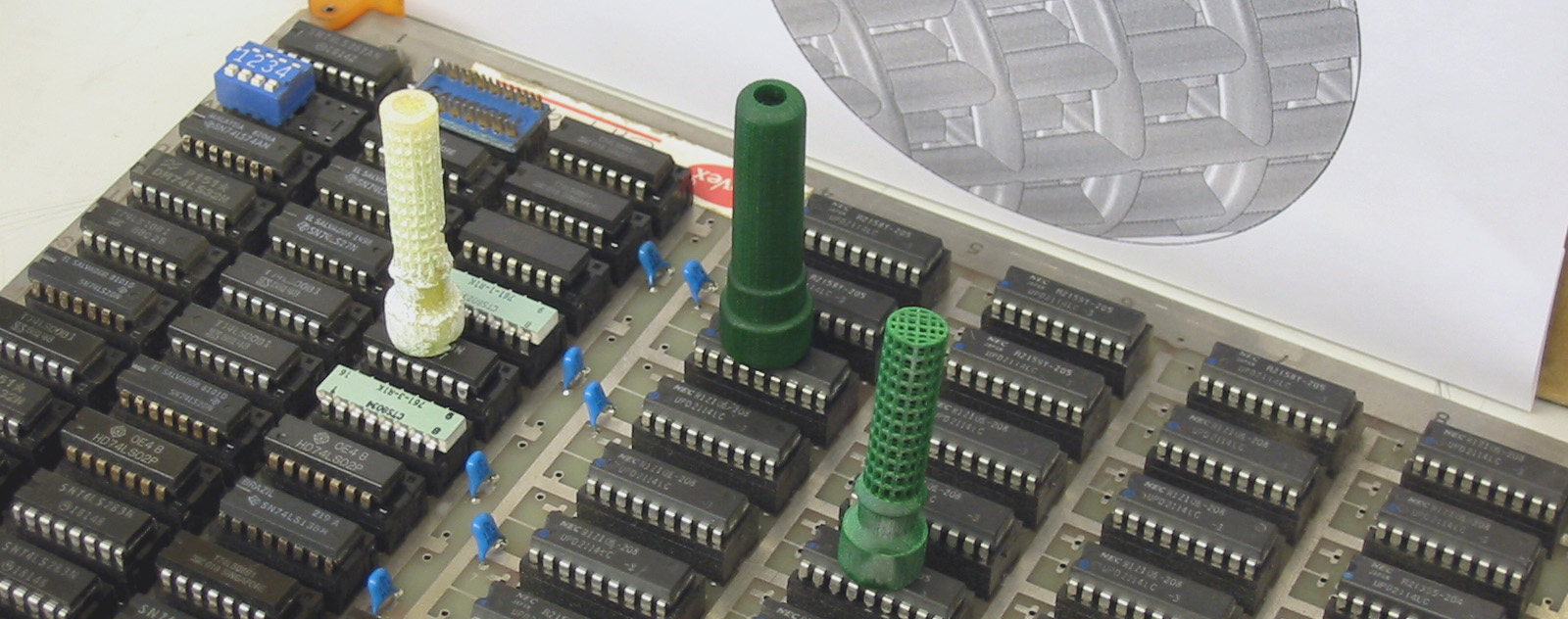 |
|
|
|
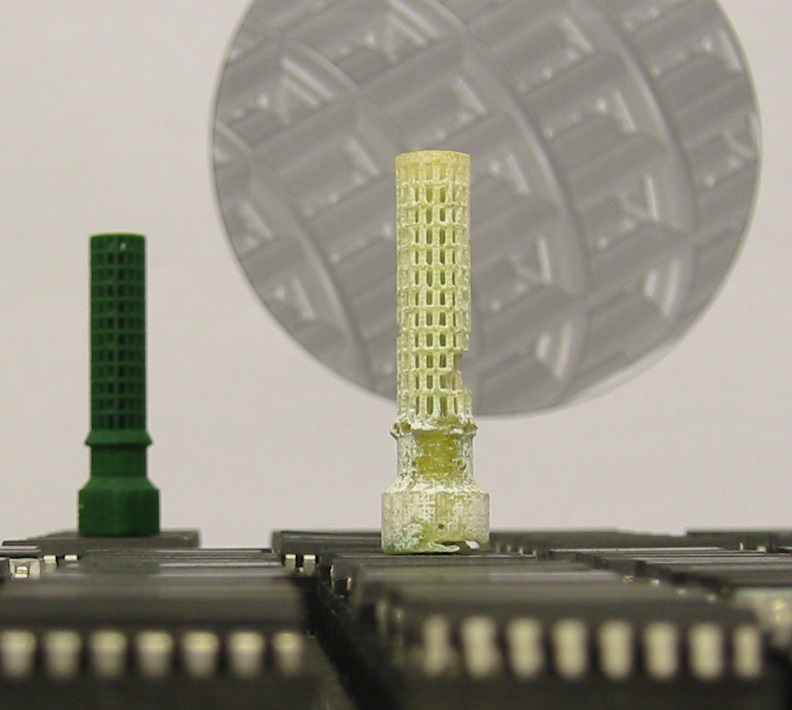 |
|
|
|
Notice the white material on the surface of the bone anchor. This is from dissolving the green material in organic solvents. I dissolved it with Acetone which seems to have a chemical reaction with the green material. I have created a solvent selection process to decide which solvent to use based on what my casting material dissolves in. High absorption means lots of particulate matter and not a clean dissolve of the green material. DMSO is the best, and Acetone is the fastest and most corrosive. |
|
|
|
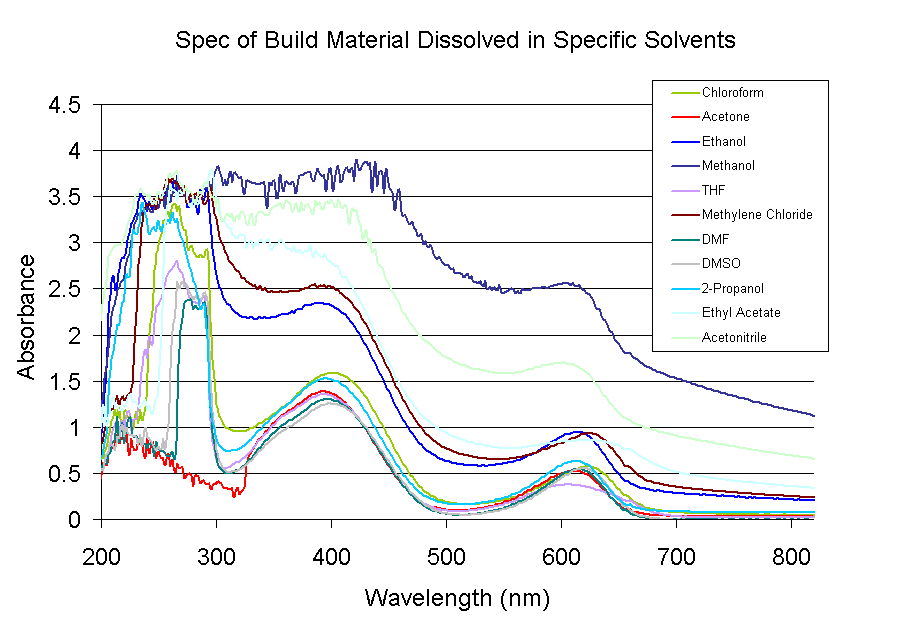 |
|
|
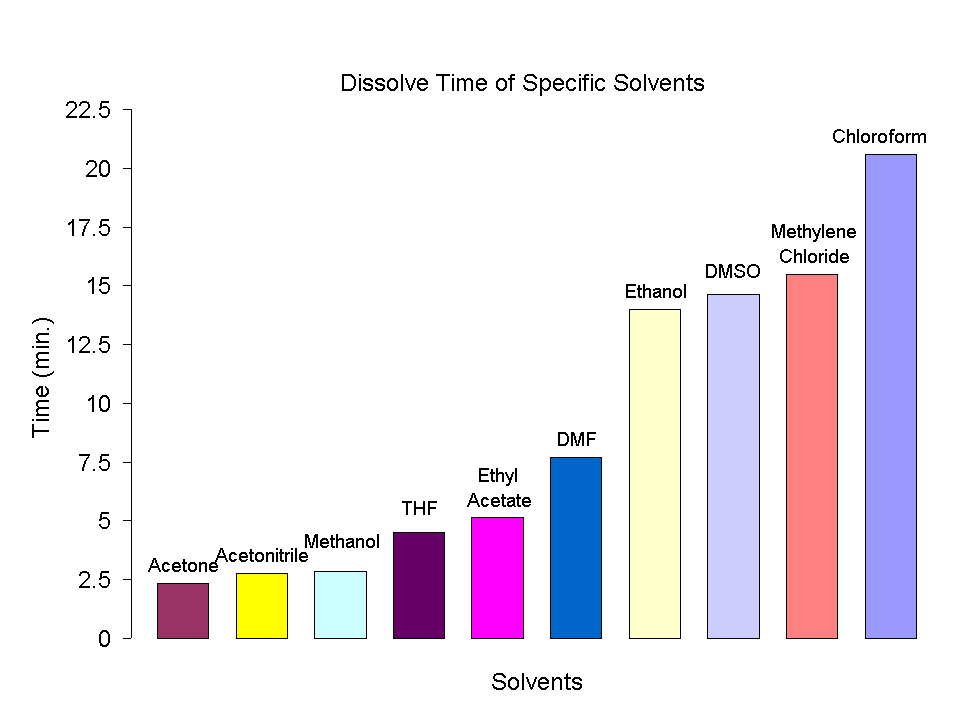 |
|
|
|
|
|
|
|
|
|
|
|
|
|
|
|
|




